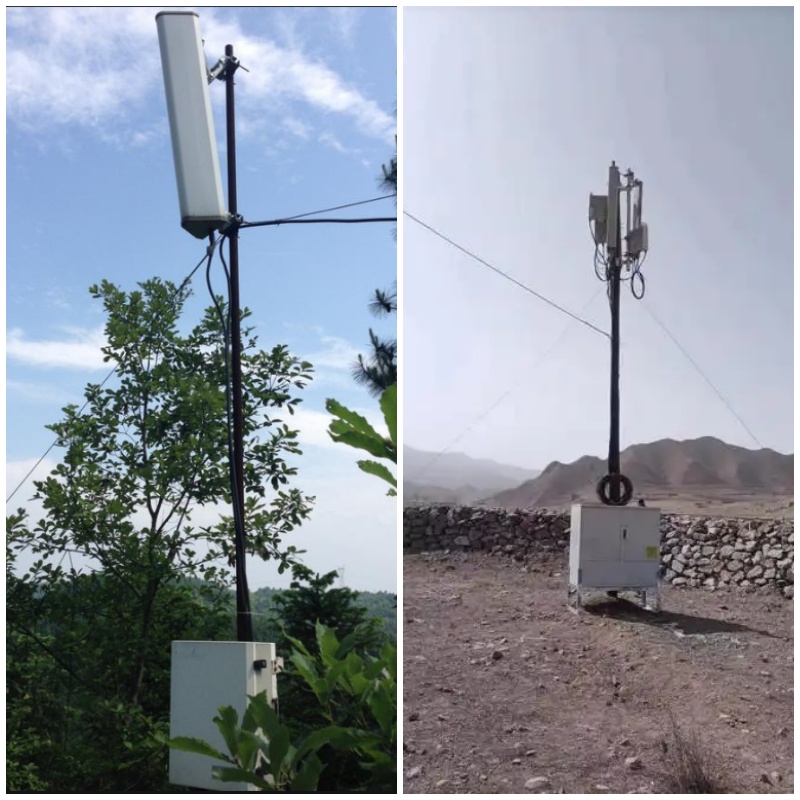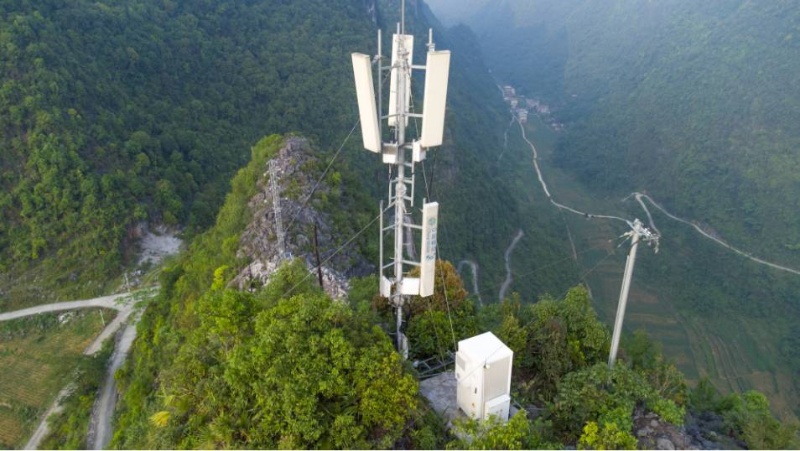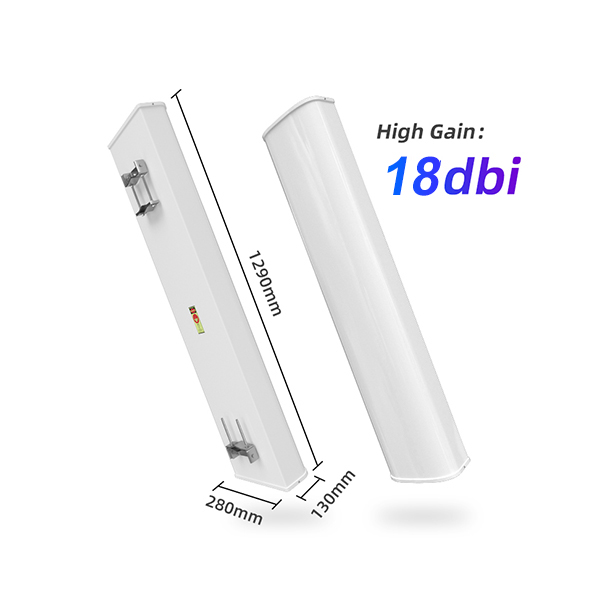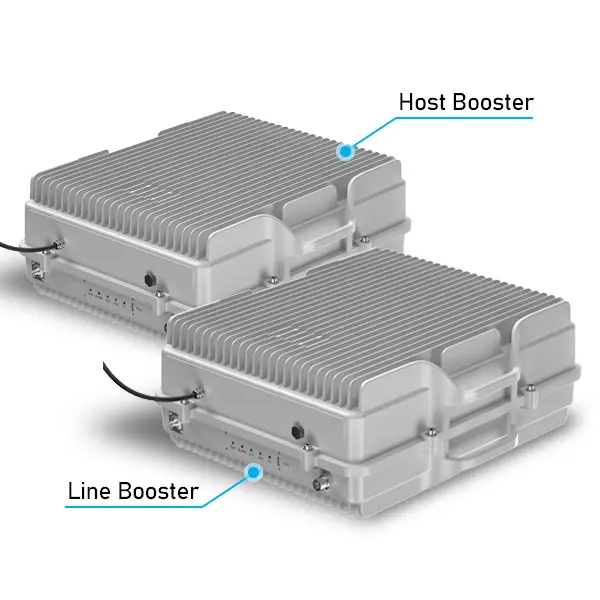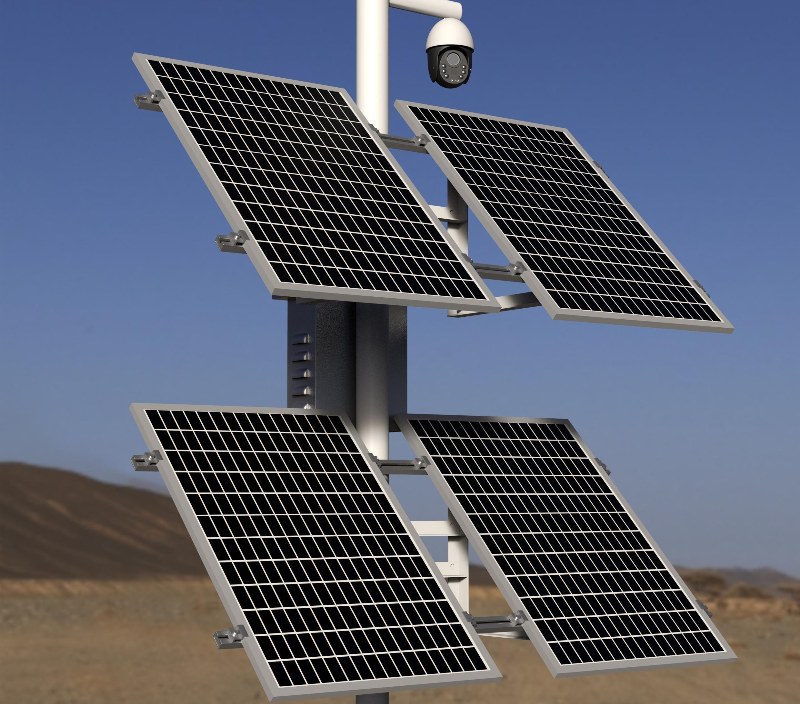So far, more and more users require outdoor mobile signal boosters. Typical outdoor installation scenarios include rural areas, countryside, farms, public parks, mines, and oilfields. Compared to indoor signal boosters, installing an outdoor mobile signal booster requires attention to the following points:
1. Are all outdoor mobile signal boosters waterproof? If not, what should be done?
Generally, outdoor mobile signal boosters are high-power commercial-grade devices and are usually designed to be waterproof. However, their waterproof rating may not be very high, typically ranging between IPX4 (protection against water splashes from any direction) and IPX5 (protection against low-pressure water jets). Despite this, we still recommend users install their outdoor mobile signal boosters in a protective enclosure that shields them from sun and rain. This can significantly extend the lifespan of the booster’s main unit.
Mobile Signal Booster for Rural Area
2. What should be considered when installing the outdoor antenna?
When installing the antenna for an outdoor mobile signal booster, a large panel antenna is typically used. This is because panel antennas offer high gain and can effectively improve signal attenuation during transmission. A panel antenna typically covers an angle of 120°, meaning three such antennas can provide 360° coverage for a given area.
- GSM 2G typically covers a range of about 1 km.
- LTE 4G usually covers a range of around 400 meters.
- 5G high-frequency signals, however, only cover a range of about 200 meters.
Therefore, it is important to select the right mobile signal booster and antenna based on the desired outdoor coverage area. If you have any questions, feel free to contact our customer support.
3. Which outdoor mobile signal boosters are generally recommended?
For outdoor applications, Lintratek typically recommends fiber optic repeaters. Since outdoor installations often require long-distance signal transmission, the signal will inevitably degrade over long cables. Therefore, a fiber optic repeater, which uses fiber optics to transmit the signal, is preferred over traditional high-power mobile signal boosters. You can learn more about signal attenuation in coaxial cables here.
4. How to power the mobile signal booster in remote areas with no electricity?
In such cases, Lintratek offers two solutions:
A. Composite Fiber Optic Cable
This cable combines fiber optics for signal transmission with copper cables for power transmission. The power is transmitted from the remote unit to the local unit. This option is cost-effective but is generally recommended for projects within a 300-meter range, as the power will suffer noticeable loss over longer distances.
B. Solar Power System
Solar panels can be used to generate electricity, which is then stored in batteries. A one-day battery reserve is typically sufficient to power the fiber optic repeater’s local unit. However, this option is relatively more expensive due to the cost of solar equipment.
Lintratek’s fiber optic repeaters feature low-power technology, allowing power consumption to be adjusted based on operating conditions, thereby reducing energy use to accommodate more outdoor installations.
Lintratek has been a professional manufacturer of mobile signal boosters with equipment integrating R&D, production, and sales for 13 years. Signal coverage products in the field of mobile communications: mobile phone signal boosters, antennas, power splitters, couplers, etc.
Post time: Nov-07-2024








